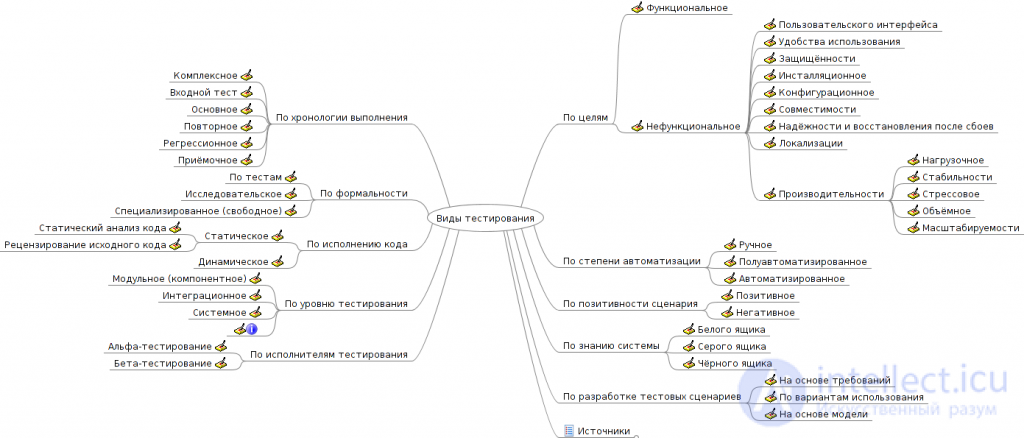Lecture


All types of software testing , depending on the objectives pursued, can be divided into the following groups:
Further, we will try to tell in more detail about each individual type of testing, its purpose and use when testing software.
Functional tests are based on functions and features, as well as interactions with other systems, and can be presented at all levels of testing: component or module (Component / Unit testing), integration (Integration testing), system (System testing) and acceptance (Acceptance testing). ). Functional types of testing consider the external behavior of the system. The following are some of the most common types of functional tests:
Non-functional testing describes the tests needed to determine the characteristics of the software that can be measured by various quantities. In general, this is testing how the "How" system works. The following are the main types of non-functional tests:
After making the necessary changes, such as fixing a bug / defect, the software must be retested to confirm that the problem has actually been resolved. Below are listed the types of testing that should be carried out after installing the software, to confirm the functionality of the application or the correctness of the implemented defect correction:
Testing at different levels is performed throughout the entire life cycle of software development and maintenance. The level of testing determines what tests are performed on: a single module, a group of modules, or a system, as a whole. Testing at all levels of the system is the key to successful implementation and delivery of the project.
Comments
To leave a comment
Quality Assurance
Terms: Quality Assurance